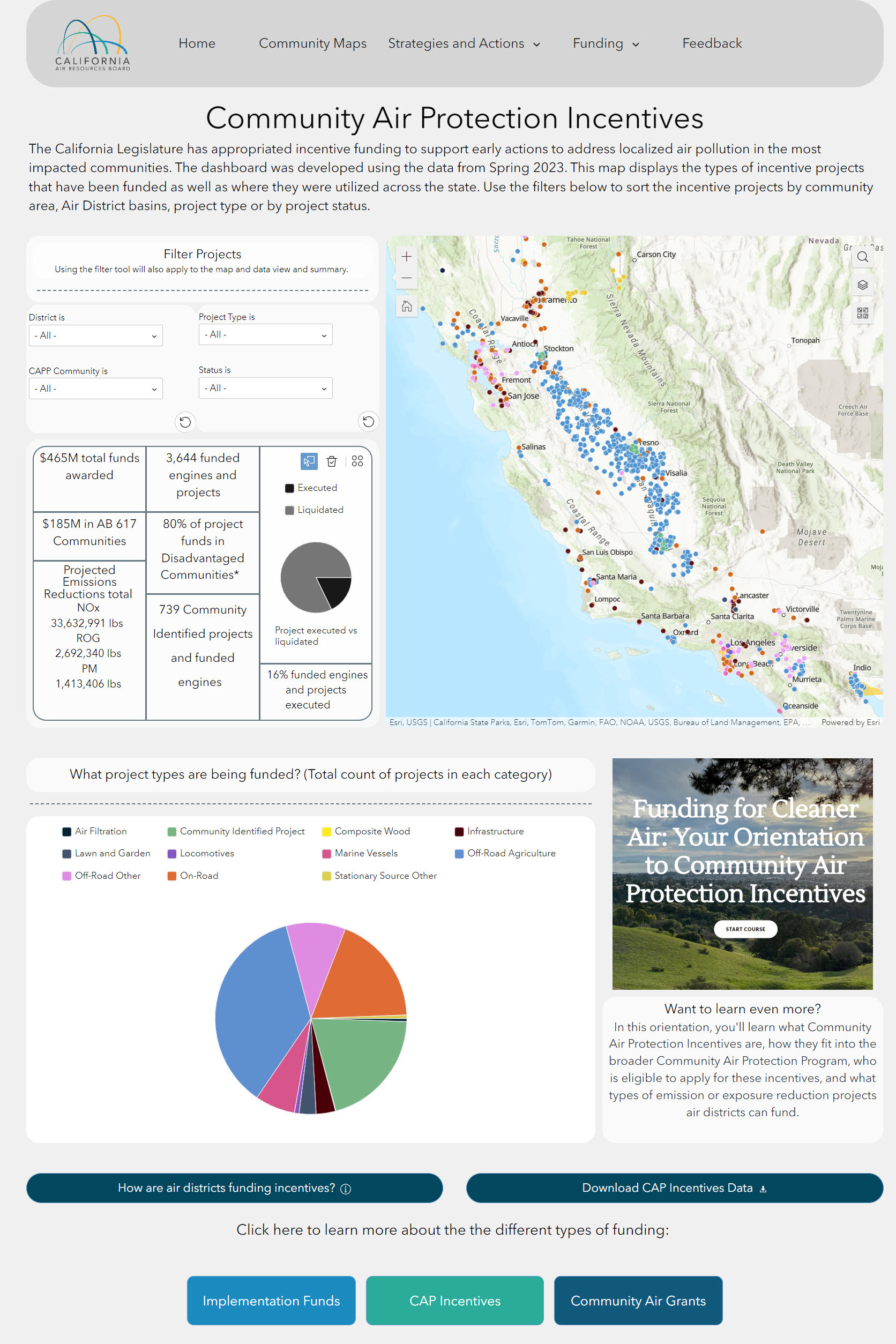Community Air Protection Incentives Project Dashboard
Contacto
The Community Air Protection Incentives Project Dashboard can be found in CommunityHub 2.0. New features include dynamic mapping of incentives projects where users can use comprehensive filters, access the new learning portal, and download CAP incentives data.
This tool provides information about how incentives—which are funds used to bring about early compliance with regulations to reduce emissions--are bringing meaningful benefits to CAP communities and statewide. The Dashboard is based on semi-annual updates reported to California Climate Investments and is provided in addition to published program status reports.
Visit CommunityHub 2.0 Community Air Protection Incentives Project Dashboard

